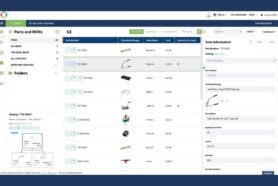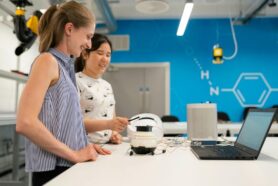
The manufacturing industry is moving towards digital transformation. The fundamental element of the transformation in manufacturing is connecting pieces of information produced during different stages of product development, manufacturing and operation.
Working with many manufacturing companies I learned that these fields of operation are usually very siloed and operating with high levels of disconnect between them. A typical manufacturing company is looking at the following three silos of information – design, engineering, planning, manufacturing, maintenance, and support. What connects these silos together is a product specification that passed up and down the digital thread. The term digital thread is getting stronger these days and quickie becoming a way to bring visibility of the product definition through manufacturing and into service. How to strengthen that product definition with the data and make it transparent? This is a question we often asked ourselves at OpenBOM. How to make the data easily available between organizations
Silos and Online Data Services
The challenge in the industry is that companies are relying on multiple legacy systems managing data for each specific silo (eg. Design, Manufacturing, Service). The existence of these silos and systems is well known. The reality of these systems is that they are breaking down the digital workflow. The solution is to create a single engineering definition that can go through all stages from early design, into production planning, manufacturing, and later on in service and support. The artifacts created during the design process are complemented with other pieces of information needed in production, later one becoming the foundation for service and maintenance plan. The pieces of information connected together are helping manufacturing companies to bring the data together and connect product maintenance information with the design information.
Creating More Data
Companies are generating a huge amount of data. As coming are starting to digitalize the processes, they are generating even more data. How to analyze the data and make it actionable? To do so, you need to create a foundation of data elements. A structured product information system is a way to do so. Product structure views – As Design, As Planned, As Manufactured, As Maintened connecting together via common information pieces is a foundation of this data set.
BOM Services
At OpenBOM we build a system capable to keep track of all information together. The unique part of OpenBOM architecture is the ability to connect information across multiple organizations and contextualize the information with different aspects of product information. Engineers, suppliers, customers can look into the OpenBOM system and see each other contextual pieces of information that belong to them without having these data copied, exported, and transferred between multiple systems. It creates a lot of communication between these groups of people.
Connecting Multiple Companies And Openness
Manufacturing companies work for multiple customers. For a manufacturing company, there is a need to work with multiple customers, contractors, and suppliers. One of the biggest problems and challenges is to get better communication and collaboration among different companies and systems. No single company has the power to force everyone else to use the same system. Open service can provide information to other systems exactly how online web services providing data to different mobile and internet devices. Think about multiple traffic services providing data to multiple navigation systems, BOM service can provide system transparency and allows data to be consumed by multiple systems.
Multi-tenant online service
At OpenBOM, we built an online service allowing us to keep track of product information, provide a flexible data model to define any piece of data, connect them together and share it across multiple companies using formal access rights definition. A system of flexible user-defined role-based views allows each player in the digital thread to have access to a specific information set. OpenBOM REST APIs provide programmable access to the information to other systems, which makes data transparent and easy to access.
Conclusion
Building digital thread requires robust online systems capable to manage information and transfer it between different companies. OpenBOM online BOM service provides such type of service allowing companies to construct shareable data sets with product information contextualize for each stage of product development and consumption.
Learn more about OpenBOM and how you can contextualize product information to start building your digital thread of data today step by step.
Want to try it by yourself? Navigate to the following link to register for free and start the 14-days trial.
Best, Oleg
Want to learn more about PLM? Check out my Beyond PLM blog and PLM Book website. Read OpenBOM customer reviews on G2 Crowd to learn what customers are saying about OpenBOM.
Join our newsletter to receive a weekly portion of news, articles, and tips about OpenBOM and our community.









